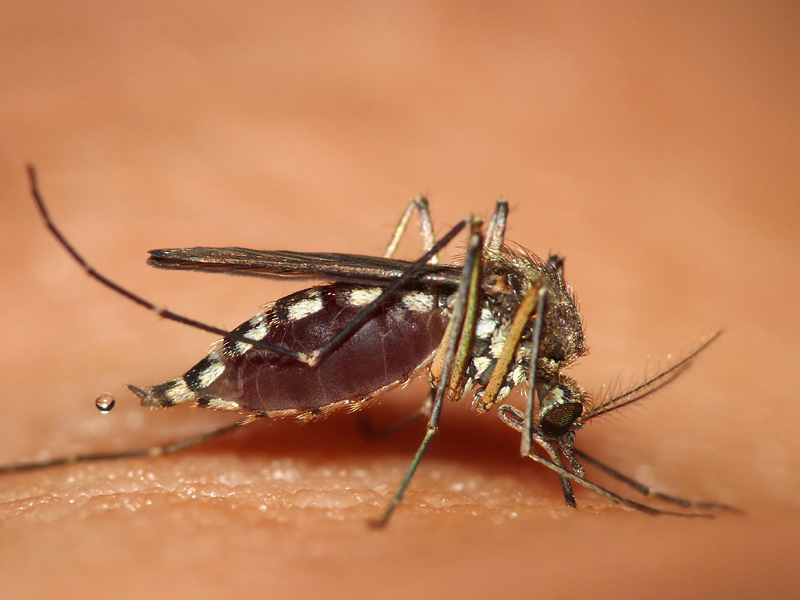DEET is one of the most common chemicals in insect repellents, but since its invention scientists have been unable to settle a decision about exactly how it works. Now, work published in Nature suggests that DEET not only confuses scientists, but confuses insects too by scrambling the code they use to identify odours.
DEET, or N,N-diethyl-meta-toluamide, was developed by the US army after the 2nd world war. It's very effective at preventing mosquitoes and other insects from biting, but research has never shown conclusively how it works; though we expect it is by either blocking the olfactory system from recognising a meal, or triggering an avoidance behaviour response.
 Insects like mosquitoes, and the intensely studied fruit fly Drosophila melanogaster, detect odours in the air through their antennae. Each of the many receptors present consists of a protein called ORCO bound to any one of around 60 other proteins. Odours are detected when they interact with these two proteins, locking together to form a complex and triggering activity in local nerves. This activity can be either the excitement or inhibition of a nerve response, and it's the particular pattern of activity that encodes a smell.
Insects like mosquitoes, and the intensely studied fruit fly Drosophila melanogaster, detect odours in the air through their antennae. Each of the many receptors present consists of a protein called ORCO bound to any one of around 60 other proteins. Odours are detected when they interact with these two proteins, locking together to form a complex and triggering activity in local nerves. This activity can be either the excitement or inhibition of a nerve response, and it's the particular pattern of activity that encodes a smell.
Leslie Vosshall and colleagues at the Howard Hughes Medical Institute looked at the activity in certain fruit fly nerves and observed what happens in response to DEET alone, and in combination with a range of other odour molecules.
They found that the effect of DEET was not straightforward, but depends on the odour, receptor and concentration. In some combinations, DEET suppressed a normally inhibitory response, increasing neural activity, while in others it reduced an excitatory reaction, reducing neural activity. DEET alone actually elicited very little response.
The authors conclude that DEET acts as a molecular confusant, scrambling the normal odour code by changing the way the olfactory receptors react to a given chemical. The insects are still capable of detecting odours, but can no longer work out what they are.
Understanding more about how DEET works could lead to the development of new repellents, and ultimately help to reduce transmission of insect borne diseases such as Malaria and Dengue fever.









Comments
Add a comment